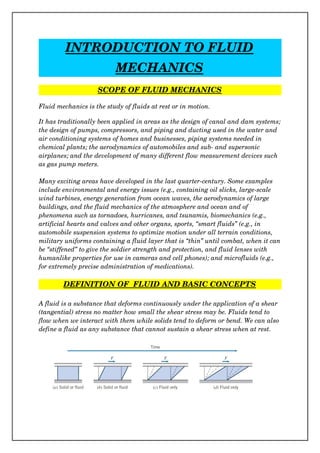
Fundamental concepts of fluid mechanics
- 3. Differential Versus Integral Approach The basic laws that we apply in our study of fluid mechanics can be formulated in terms of infinitesimal or finite systems and control volumes. In the first case the resulting equations are differential equations; solution of the differential equations of motion provides a means of determining the detailed behavior of the flow. We often are interested in the gross behavior of a device; in such cases it is more appropriate to use integral formulations of the basic laws. Lagrangian Versus Eulerian Approach Method of description that follows the particle is referred to as the Lagrangian method of description. In Lagrangian approach we analyze a fluid flow by assuming the fluid to be composed of a very large number of particles whose motion must be described. In control volume analyses, it is convenient to use the field, or Eulerian, method of description, which focuses attention on the properties of a flow at a given point in space as a function of time. In the Eulerian method of description, the properties of a flow field are described as functions of space coordinates and time. Fluid Properties Density is mass per unit volume. Density is measured simultaneously at an infinite number of points in the fluid, we would obtain an expression for the density distribution as a function of the space coordinates, at the given instant. The density at a point may also vary with time (as a result of work done on or by the fluid and/or heat transfer to the fluid). The complete representation of density (the field representation) is given by Specific gravity is density of a substance (solid or fluid) compared to an accepted reference value, typically the maximum density of water. Specific weight is defined as the weight of a substance per unit volume.
